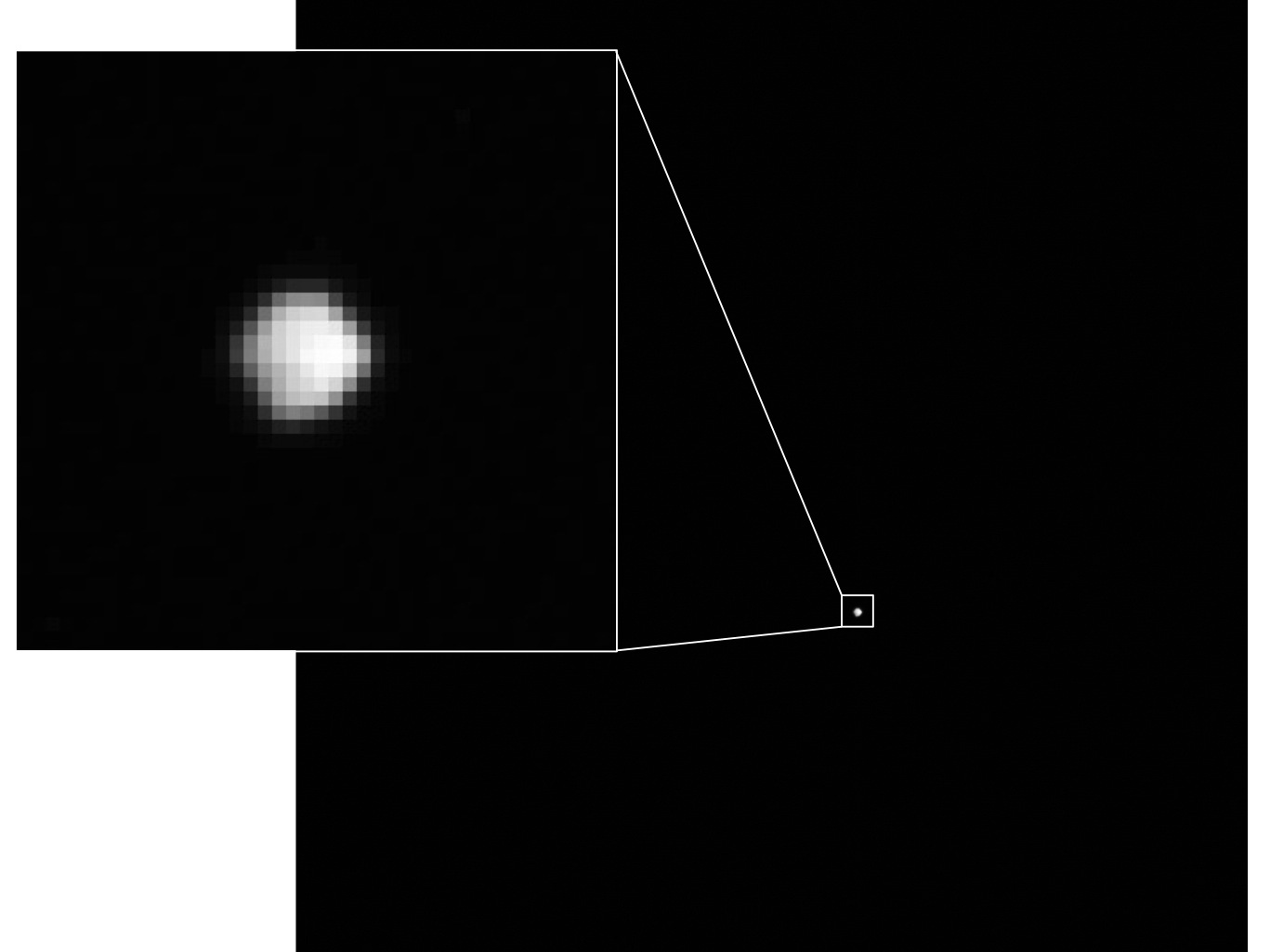
Saturn has a ravioli moon, so why shouldn't there be a dumpling asteroid?
A new photo of the near-Earth asteroid Ryugu snapped by Japan's approaching Hayabusa2 spacecraft calls to mind a particular tasty treat, the probe's handlers said.
"Hayabusa2 has imaged Ryugu from 920 km [570 miles], and we're starting to see the shape. It looks like … a dango-type asteroid! (Actually, that's a Japanese sweet dumpling. But the shape seems to be similar so far…)," Hayabusa2 team members wrote via Twitter Thursday (June 14). [Photos: Japan's Hayabusa2 Asteroid Mission in Pictures]
The probe captured the newly released image early Wednesday morning (June 13) as part of an effort to take Ryugu's measure ahead of a planned arrival at the 3,000-foot-wide (900 meters) asteroid on June 27 or thereabouts. Hayabusa2 has snapped other photos of Ryugu recently from greater distances, in which the asteroid's shape is less clear.
If all goes according to plan, Hayabusa2 will study Ryugu in depth from orbit for about a year, dropping three rovers and a lander onto the asteroid's surface. The orbiting probe will also create a fresh crater on Ryugu using an explosives-laden impactor, then spiral down to snag samples of newly unearthed material. This asteroid sample will be sent to Earth, touching down in a special capsule in late 2020.
Hayabusa2 is following in the footsteps of the original Hayabusa probe, which made history in June 2010 by returning a small sample from the stony asteroid Itokawa. Ryugu is a different type of asteroid: a carbonaceous one, the type thought to have delivered lots of water and carbon-containing organic molecules to Earth via impacts long ago.
NASA has its own asteroid-sampling mission, with another carbonaceous space rock in its sights. The agency's OSIRIS-REx probe is scheduled to arrive at the 1,650-foot-wide (500 m) asteroid Bennu later this summer and return samples to Earth in September 2023.
Get the Space.com Newsletter
Breaking space news, the latest updates on rocket launches, skywatching events and more!
Oh, and that ravioli moon — the 22-mile-wide (35 km) Pan — is just one of many fantastically shaped Saturn satellites. For example, one of the ringed planet's moons looks like a giant space walnut (Iapetus), and another resembles the Death Stars from the "Star Wars" films (Mimas).
Follow Mike Wall on Twitter @michaeldwall and Google+. Follow us @Spacedotcom, Facebook or Google+. Originally published on Space.com.
Join our Space Forums to keep talking space on the latest missions, night sky and more! And if you have a news tip, correction or comment, let us know at: community@space.com.

Michael Wall is a Senior Space Writer with Space.com and joined the team in 2010. He primarily covers exoplanets, spaceflight and military space, but has been known to dabble in the space art beat. His book about the search for alien life, "Out There," was published on Nov. 13, 2018. Before becoming a science writer, Michael worked as a herpetologist and wildlife biologist. He has a Ph.D. in evolutionary biology from the University of Sydney, Australia, a bachelor's degree from the University of Arizona, and a graduate certificate in science writing from the University of California, Santa Cruz. To find out what his latest project is, you can follow Michael on Twitter.